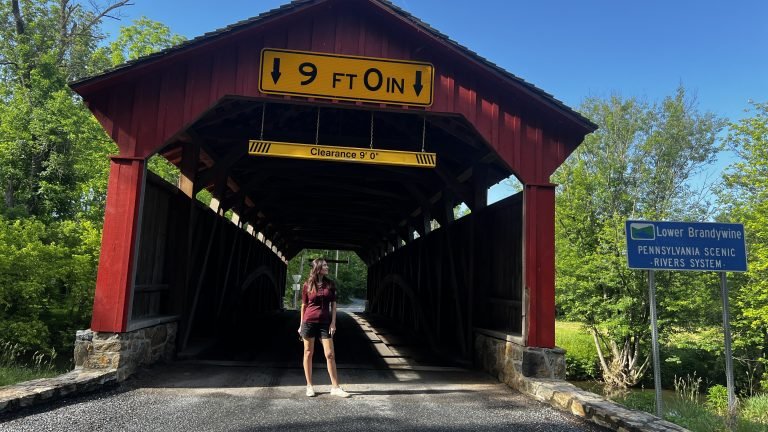This post may contain affiliate links, which means I may earn a small commission from purchased products at no additional cost to you. See my full disclosure here.
When you think of covered bridges, the novel or movie The Bridges of Madison County might come to mind. While that iconic story took place in Iowa, Pennsylvania is actually home to the largest concentration of covered bridges in the country, with more than 200 still standing today.
These charming, weathered wooden bridges are more than just picturesque; they’re windows into America’s early transportation history and rural engineering.

Pennsylvania’s Pioneering Bridge Builders
At their peak, over 12,000 covered bridges dotted the American landscape. Pennsylvania played a key role in this era, pioneering bridge construction methods that emphasized function, endurance, and craftsmanship. The first known covered bridge in the U.S. was built in 1805 across the Schuylkill River in Philadelphia, marking the start of the state’s long bridge-building tradition.
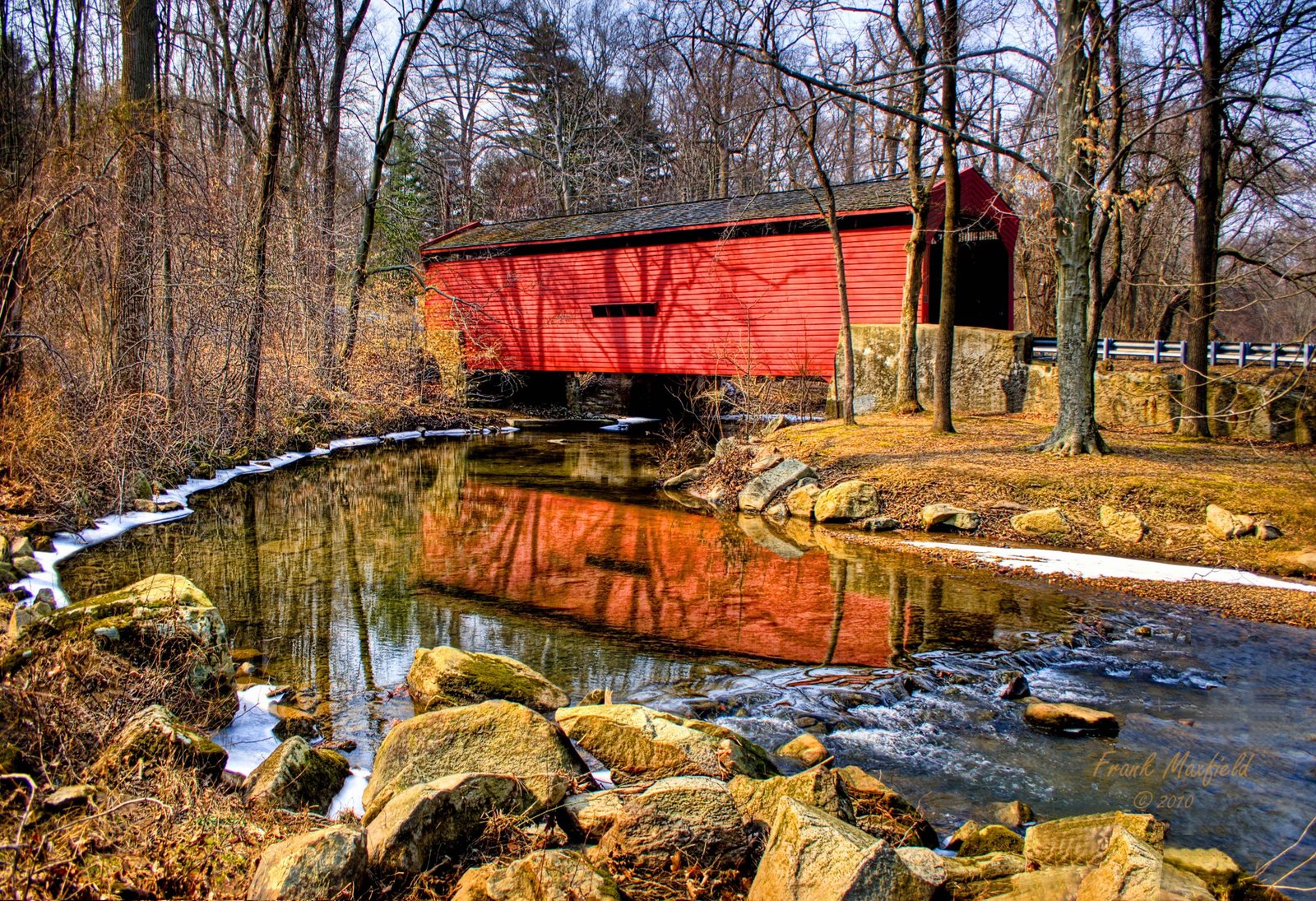
Covered bridges were born out of necessity and resourcefulness. They allowed farmers and rural communities to safely cross rivers and streams throughout all seasons while shielding the bridge’s wooden trusses from weather damage. This protective design extended the bridge’s lifespan significantly.
The Burr arch-truss, one of the most effective and elegant designs, originated in Pennsylvania and is still visible in many of the state’s surviving bridges.
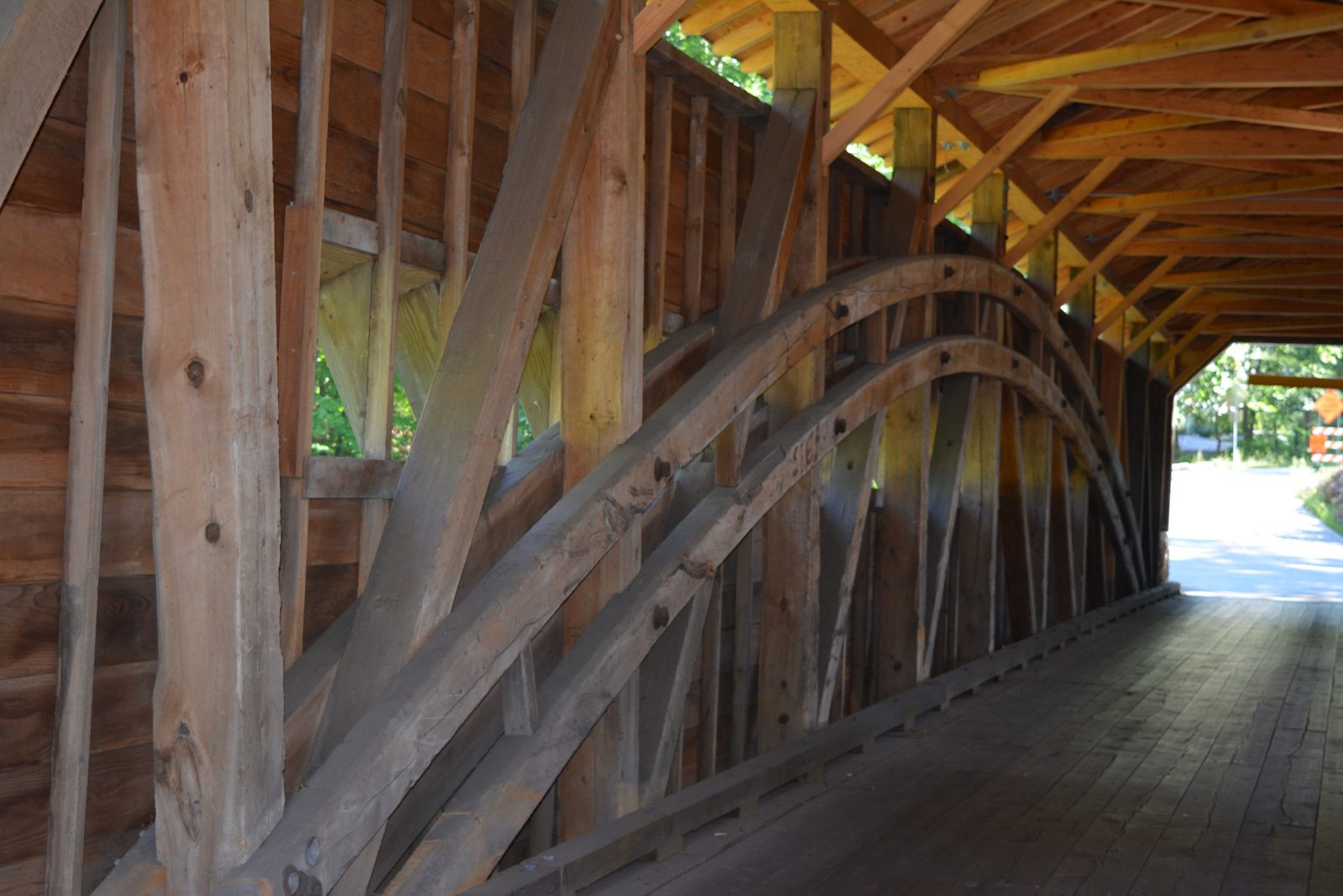
Brandywine Valley’s Most Photogenic Bridges
Today, Pennsylvania proudly preserves around 200 covered bridges, each with its own story and charm. In Chester County’s Brandywine Valley, you’ll find 13 scenic bridges, making it the fourth-largest concentration in the state.
Here are a few highlights for travelers and photographers:
- Gibson Covered Bridge – A local favorite with deep red siding and a rustic charm that makes it perfect for photos. Listed on the National Register of Historic Places.
- Speakman Bridge #1 (Coatesville) – Built in 1881, this 75-foot-long bridge features a Burr arch-truss design and remains open to vehicles.
- Frank Bartrams Covered Bridge – A quieter, less trafficked bridge nestled in serene wooded surroundings.
- Rapps Bridge – Part of the Brandywine Covered Bridge Tour and a great example of period craftsmanship.
- Glen Hope Bridge – Also on the National Register and known for its idyllic setting.
Tip: To find these storied and scenic bridges, put the bridge name in your GPS for directions or see a list and a map at BrandywineValley.com.
Let’s cross that bridge when we get to it in Brandywine Valley:
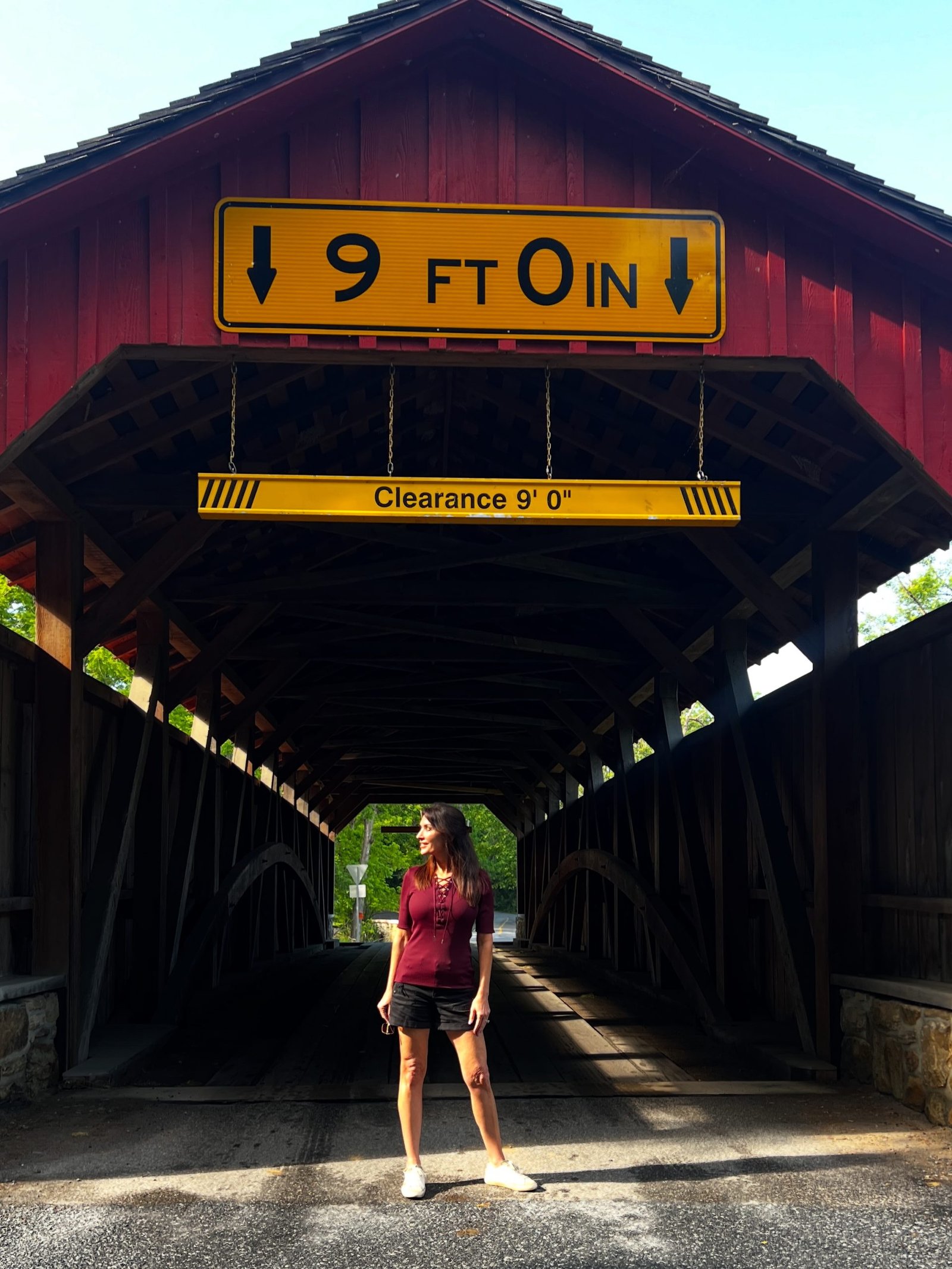
I captured on camera several photogenic bridges crisscrossing the landscape, including Speakman Bridge #1 in Coatesville, built in 1881. The 75-foot-long bridge features a Burr arch truss and is open to vehicle traffic.
Tips for Visiting and Photographing
- Most bridges are accessible by car via rural backroads that are scenic and quiet.
- Several bridges, including Gibson and Glen Hope, are preserved landmarks and receive regular restoration efforts.
- Some areas may be pedestrian-only or temporarily closed for maintenance, especially after heavy rain or snowfall.
- Visit in fall for colorful foliage, spring for greenery and wildflowers, or winter for quiet, snow-covered scenes.
You can also combine your bridge tour with nearby attractions like Valley Forge, Longwood Gardens, or Brandywine Valley wineries and parks for a complete day trip or weekend getaway.
Why Covered Bridges Still Matter
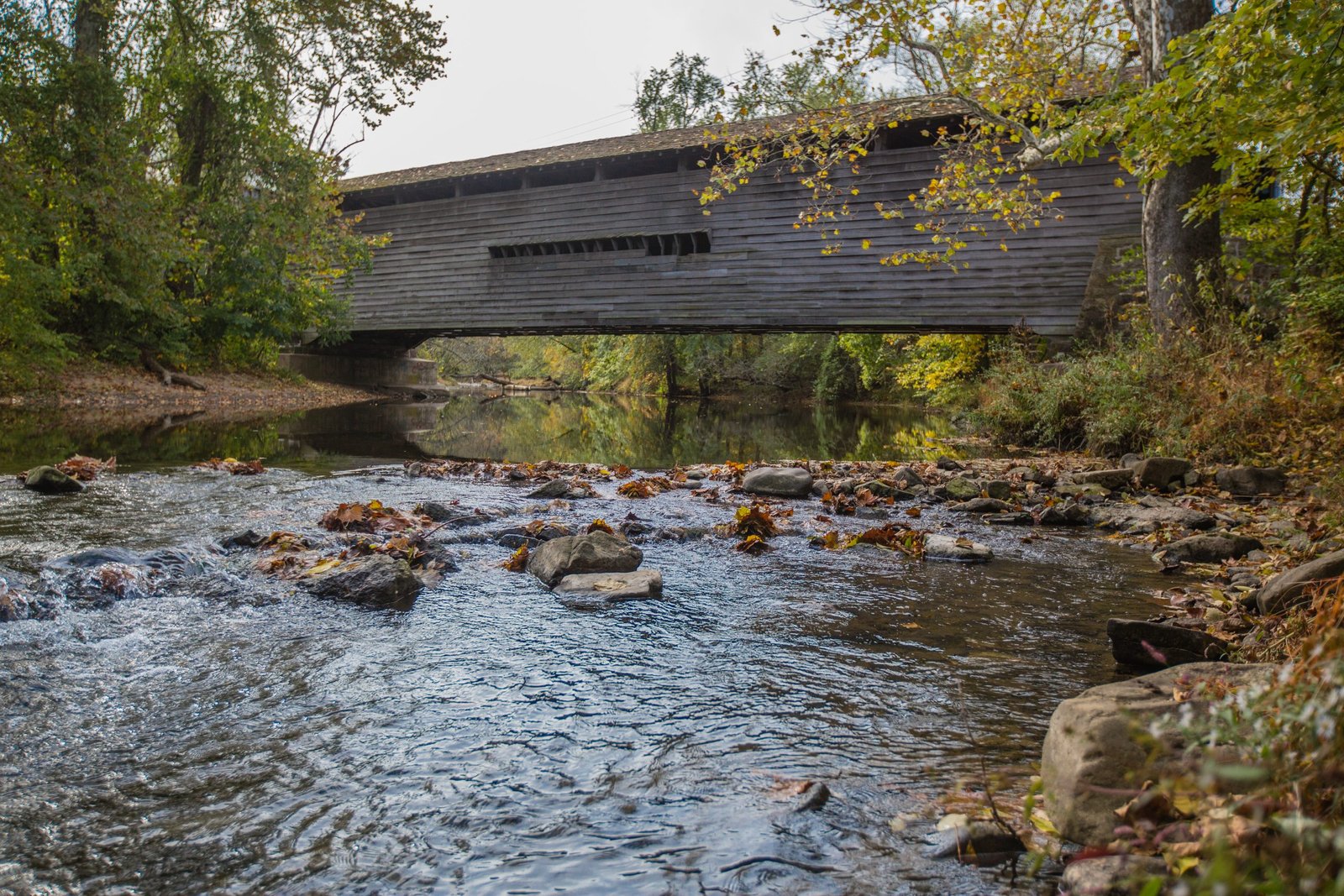
Covered bridges in Pennsylvania aren’t just relics; they’re living monuments to a simpler time. Each structure reflects rural American ingenuity, resourcefulness, and a deep connection to the land.
Whether you’re a photographer, history buff, road tripper, or curious traveler, visiting these bridges offers
- A visual link to the past
- A chance to pause and appreciate craftsmanship
- Photo opportunities in every season
- A peaceful, reflective travel experience off the beaten path
So next time you’re exploring southeastern Pennsylvania, take the scenic route and don’t forget your camera.
Stay Connected Anywhere with Saily eSIM
Traveling soon? Skip the hassle of buying local SIM cards and enjoy instant connectivity with Saily eSIM.
With Saily, you can:
- Activate mobile data in minutes—no physical SIM needed.
- Choose affordable plans in over 150 countries.
- Keep your WhatsApp, contacts, and number without switching.

Whether you’re exploring cities or remote getaways, Saily makes staying online easy and affordable.
Get your Saily eSIM now and travel worry-free.
Learn more about exploring Brandywine Valley:
Read More Museum Guide and Tips
10 Historical Museums in Louisiana You Can’t Miss
Hidden Gems: Uncovering Lesser-Known Museums in the United Kingdom









